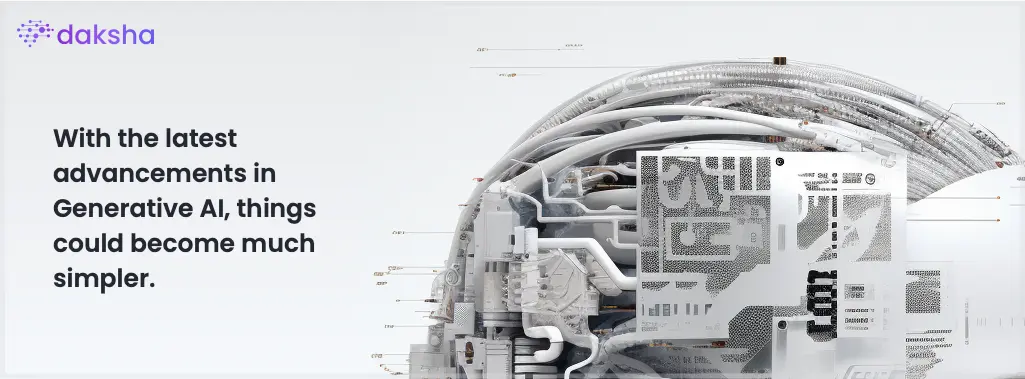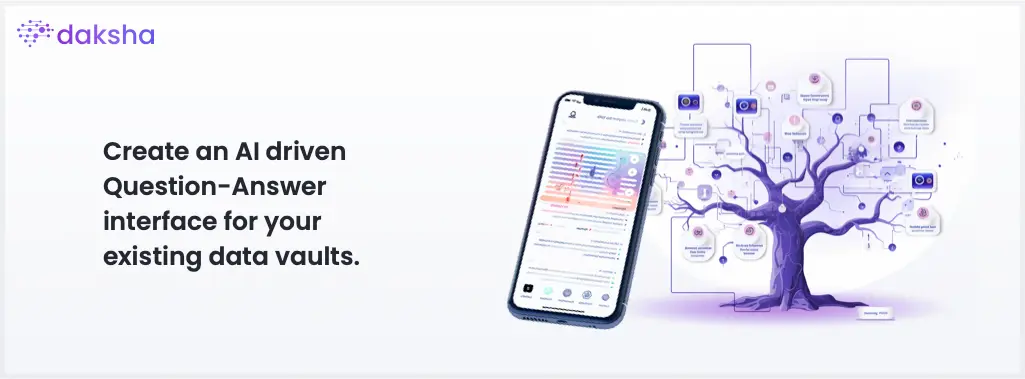Facilitating Knowledge Sharing: Easier said than done!
Dealing with scattered bit of information is one of the banes of modern workplaces. It’s almost like attempting to pinpoint a specific grain of sand on an ever-expanding beach. Recent estimates suggest that approximately 20% of a knowledge worker’s time—equivalent to one in every five minutes—is consumed by the arduous task of searching. Whether it’s a spreadsheet buried in a cloud drive, a crucial meeting summary embedded in emails, or an aging report tucked away in a Slack thread, the abundance of information is overwhelming, making it a struggle to find what we need when we need it. Unfortunately, the predicament is only intensifying with time as we create more and more data every minute, if not every second.

It is not a new problem!
Organizations have attempted various solutions to tackle the issue. Including but not limited to – Dedicated knowledge bases, centralized content repositories, and question-answer chatbots. While these options seem like tidier and less overwhelming experience compared to searching through different silos of information, the reality is not as promising. Most of these solutions require businesses to change their work processes, from creating content in a specific way to storing it in the right place and working with different blueprints—a behavior change that is often easier said than done. The skepticism around chatbots is not a new phenomenon, and let’s not even delve into that topic.

Instead, let’s focus on the bright side—Generative AI and Large Language Models (LLMs). LLMs, by definition, are algorithms that use deep learning techniques and massive datasets to understand, summarize, generate, and predict new content. With the latest advancements in Generative AI, things could become much simpler. Rather than sifting through scattered information silos, Generative AI can provide direct answers in an easy-to-understand format without the clutter and hassles of existing systems.
Are you ready for the transformation of the century?
AI can help.
Solutions like Daksha GPT can seamlessly connect to various tools an organization uses, including cloud storage, emails, web URLs, and different file formats like spreadsheets, docs, and audio. Daksha GPT creates a simple question-answer interface on top of your existing data pipelines that can be deployed on platforms like WhatsApp or Slack or function as an independent solution. This interface allows for highly contextualized and detailed searches, enabling users to refine and expand their requests to retrieve specific information. Instead of trying multiple keywords or navigating through various software, users can adjust or extend the initial text prompt for a more focused exploration within their content space. The conversational interface minimizes effort and mental strain on users.

The power of this technique lies not just in automatic background searches but in how the models organize the knowledge within the training data, making it easily accessible to users. This is distinct from fetching unstructured information, which requires additional effort on the user’s part to convert into actionable knowledge and insight. Moreover, the AI’s tone can be customized to match your brand voice and writing style, elevating the search experience to the next level by aligning with your intended actions.
Conclusion
In simpler terms, the latest AI solutions built around LLMs can integrate with your current data sources to create a question-answer interface. Think of it as ChatGPT working with your internal knowledge sources. Whenever you or your team pose a question, the answer is sourced directly from your data. These solutions not only find answers but also facilitate the creation of new content, checklists, white papers, and other documents with a simple text prompt. While it may not replicate a professional content writer yet, it’s improving rapidly and should be seen as a sidekick that generates a solid first draft, saving you time on research and structuring.
If you’re interested in diving deeper into this topic, I’m always up for a nerdy conversation over coffee!

By Maheep Gupta – I think of business challenges as puzzles and I love crafting simple yet elegant solutions without reinventing the wheel. User experience is a huge part of my work. A solution is not a solution unless it looks kickass and offers an amazing UX.


